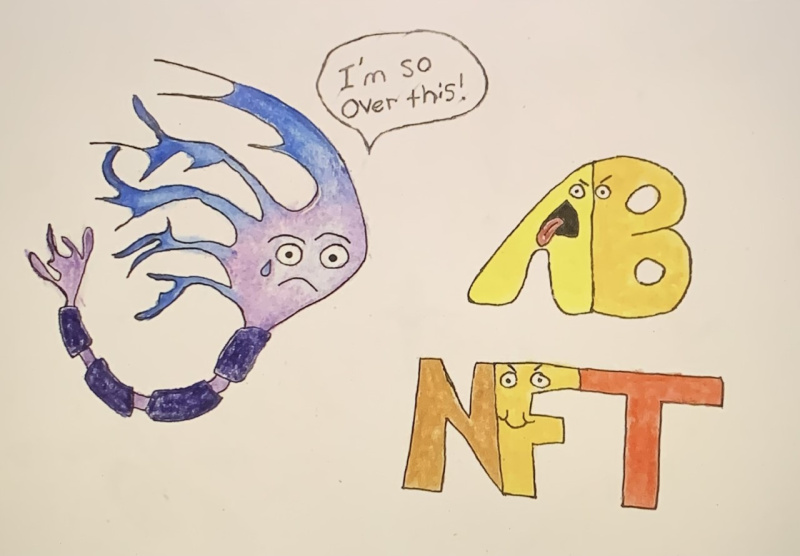Artstract by Jessica Howard
Alzheimer’s Disease
Alzheimer’s disease (AD) is a neurological disease marked by a degradation of neurons and loss of brain tissue. It is most common in the elderly and is marked by loss of cognitive function. The symptoms include decline in memory formation and retrieval, and social skills. There is also usually a deviation from normal behaviors for that individual. As the disease progresses a person’s ability to perform daily activities and independence is eventually loss. The two pathological markers of AD are amyloid-B plaques and neurofibrillary tangles.
Insulin Resistance and Amyloid Plaques
Amyloid-B plaques are misfolded protein waste that are difficult for the brain to break down, these plaques can then build up in the space between nerve cells. Insulin resistance is a term to describe when insulin in the brain is unable to perform at optimal functioning. Amyloid plaques are one of the contributors to insulin resistance by acting as competitors for insulin signaling to its receptors in neurons. This results in disruption of several functions inside the neuron that would normally be controlled by insulin signaling.
Insulin Resistance and Neurofibrillary Tangles
Neurofibrillary tangles (NFTs) are a buildup of a deactivated protein called the tau protein. This protein is used as structural support for microtubules, which are like small tunnels used to transport nutrients, inside the neurons. When insulin resistance is present in the cell it leads to the activation of a kinase, which is used to start chemical reactions. This kinase in particular is responsible for the deactivation of the tau protein. Therefore, when the tau protein is deactivated, it removes itself from the microtubules, tunnels, and the tau proteins get tangled up with each other. Think of it like friends going off to hold hands. Now there is nothing holding the tunnels up, so they collapse. Remember these tunnels are used for transportation so their absence makes it very difficult for the neuron to go about its daily tasks. Eventually, too many of the tau proteins leave their posts to go hold hands and the cell dies because it can no longer function. After the cell dies the neurofibrillary tangles are left behind in the shape of the cell that they inhabited, these are called ghost cells.
Decreasing Risk for Alzheimer’s Disease
There are currently no ways to remove amyloid plaques or NFTs from the brain. But there are ways to prevent these formations to stave of AD. One of the most important ways to prevent insulin resistance is to maintain a healthy lifestyle. This includes actions such as getting regular physical activity each week and sticking to a balanced diet. Diet is especially important for individuals with diabetes as this can put them at greater risk for insulin resistance. These may seem like simple actions, but they can go a long way reducing risk for AD later on in life, especially if implemented early and maintained.
References:
Akhtar, A. & Sah, S. P. (2020). Insulin signaling pathway and related molecules: Role in Neurodegeneration and Alzheimer’s disease. Neurochemistry International 135. Doi: https://doi.org/10.1016/j.neuint.2020.104707.
Monoley, C. M, Lowe, V. J., & Murray, M. E. (2021). Visualization of neurofibrillary tangle maturity in Alzheimer’s disease: A clinicopathologic perspective for biomarker research. Arzheimers & Dementia 17(9), 1554-1574. Doi: https://doi.org/10.1002/alz.12321.
https://www.brightfocus.org/news/amyloid-plaques-and-neurofibrillary-tangles
https://www.cdc.gov/aging/publications/features/reducing-risk-of-alzheimers-disease/index.htm
